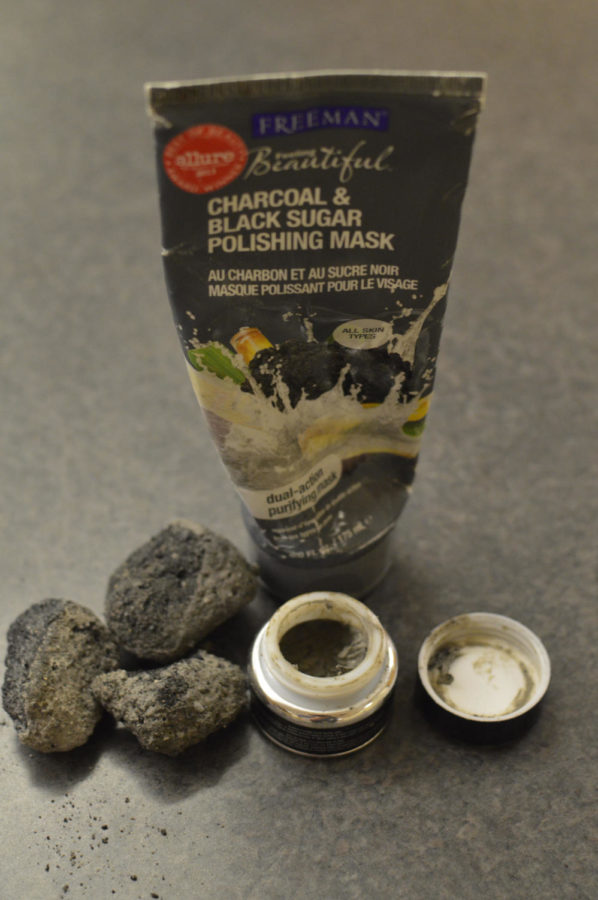Charcoal is at forefront of a new beauty trend
Charlie Coffey/Iowa State Daily
Face masks and teeth whiteners are among the uses for the new beauty trends with charcoal.
November 3, 2015
When thinking of charcoal, it might bring up the thought of grilling out on the barbecue or even what Santa fills naughty kids stockings with. But a new fad in beauty is bringing charcoal to the forefront.
Activated charcoal, which is created when oxygen is added to regular charcoal, has been used for centuries. A list of its uses includes treating poisons, bug bites, GI tract infections and nausea, along with eliminating gas, treating acne and aiding in beautiful skin.
Activated charcoal uses a process of adsorption, an electrical attraction used to remove impurities and harmful substances. Have you ever noticed black spots in a Brita filter? That’s charcoal, which is used to clean the water.
As for skin care, activated charcoal has the ability to remove dirt, excess sebum and oil, bringing it up to the surface of the skin like a magnet. Charcoal is safe for all skin types, but oily and acne prone skin will benefit the most. Capsules of charcoal can be purchased in health food stores as well as in bulk.
Here are two ways to incorporate activated charcoal:
Face Mask
For a face mask, mix 1 part activated charcoal with 1 part aloe vera gel in a cup. Add a little water, and for acne prone skin, a few drops of tea tree oil is recommended. Apply all over the face, wait to dry and rinse off. It’s recommended to patch test before applying the full face mask in case of any adverse skin reactions.
Teeth whitener
Apply a dab of activated charcoal to regular toothpaste and brush as usual. The charcoal will adsorb the plaque and impurities on the teeth. Be careful because just like regular teeth whiteners, charcoal can weaken enamel. Don’t worry if there is accidental ingestion of charcoal because it’s a supplement that is meant to be ingested.







